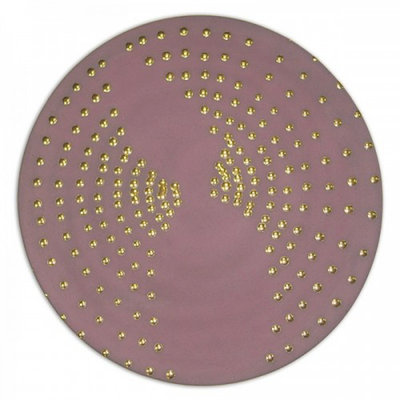
Details
Artist
Styles
Published by Achille Mauri - Published on Castellani graphics catalogue on number 10 // Enrico Castellani's Superficie Bianca, created in 1968, exemplifies his exploration of dimensionality and light through minimalist form. This limited edition print, sized 30 by 30 cm, features a white, textured surface with a grid of subtle concave and convex points, creating a rhythmic play of shadows and highlights. By manipulating the surface of the material, Castellani achieves a dynamic interplay of light that shifts with the viewer's perspective, giving the piece a sculptural quality. Published by Achille Mauri and cataloged as number 10 in Castellani's graphic works, this piece is part of an edition of around 300. Superficie Bianca reflects Castellani's commitment to pushing the boundaries of the canvas, transforming it into an active space of light, shadow, and perception.
Superficie Bianca, 1968
form
Medium
Size
30 x 30 cm
- Inches
- Centimeters
Edition
Price
Details
Artist
Styles
Published by Achille Mauri - Published on Castellani graphics catalogue on number 10 // Enrico Castellani's Superficie Bianca, created in 1968, exemplifies his exploration of dimensionality and light through minimalist form. This limited edition print, sized 30 by 30 cm, features a white, textured surface with a grid of subtle concave and convex points, creating a rhythmic play of shadows and highlights. By manipulating the surface of the material, Castellani achieves a dynamic interplay of light that shifts with the viewer's perspective, giving the piece a sculptural quality. Published by Achille Mauri and cataloged as number 10 in Castellani's graphic works, this piece is part of an edition of around 300. Superficie Bianca reflects Castellani's commitment to pushing the boundaries of the canvas, transforming it into an active space of light, shadow, and perception.
- Recently Added
- Price (low-high )
- Price (high-low )
- Year (low-high )
- Year (high-low )
What is the Zero Movement?
ZERO was an art movement founded by Otto Piene and Heinz Mack, aiming to develop into a large international and cross-border movement. The name ZERO originated from a magazine founded by Heinz Mack in 1957, which became a platform for the group's ideas. The magazine was published for several years before ceasing in 1967. The ZERO movement sought to create a new beginning in art, emphasizing light, space, and movement, and became influential in post-war European art.












